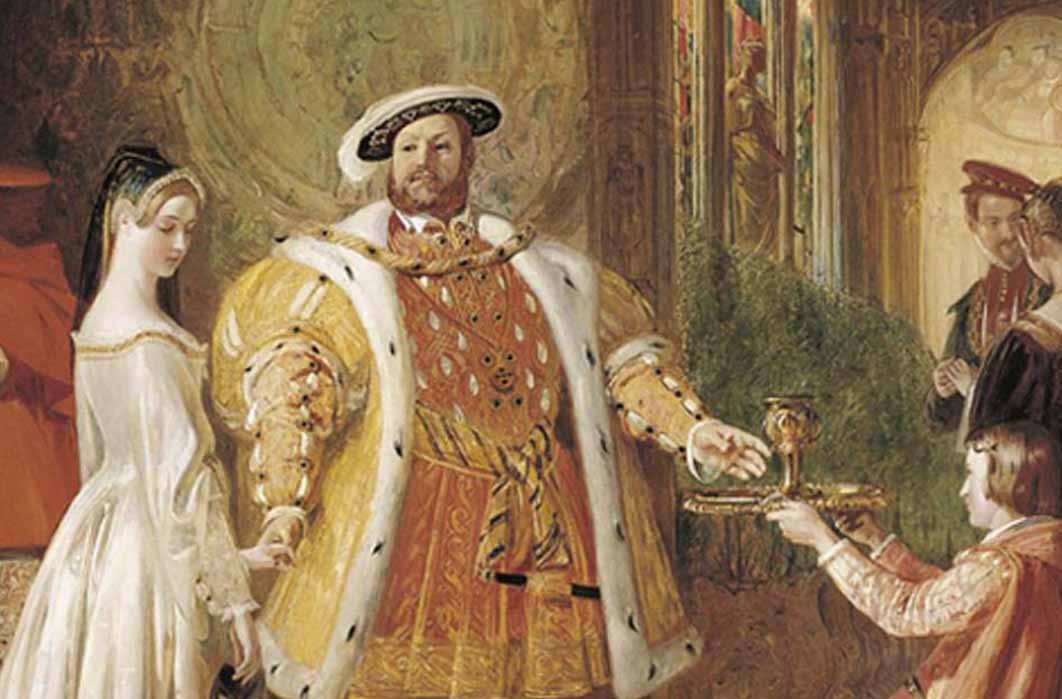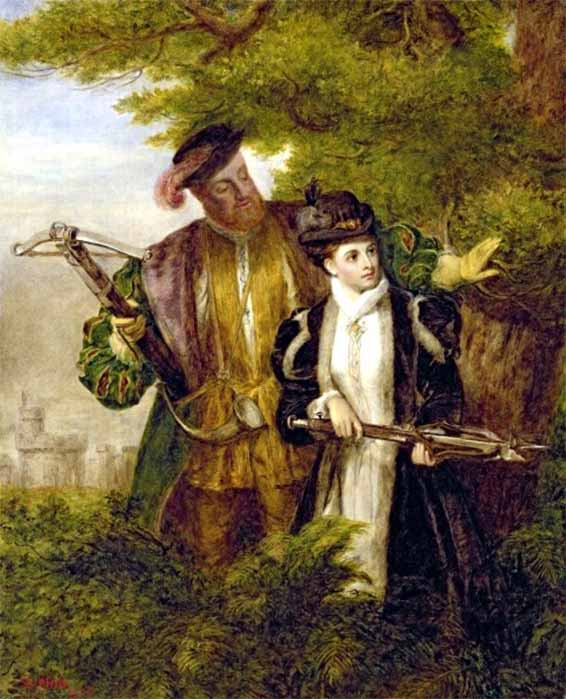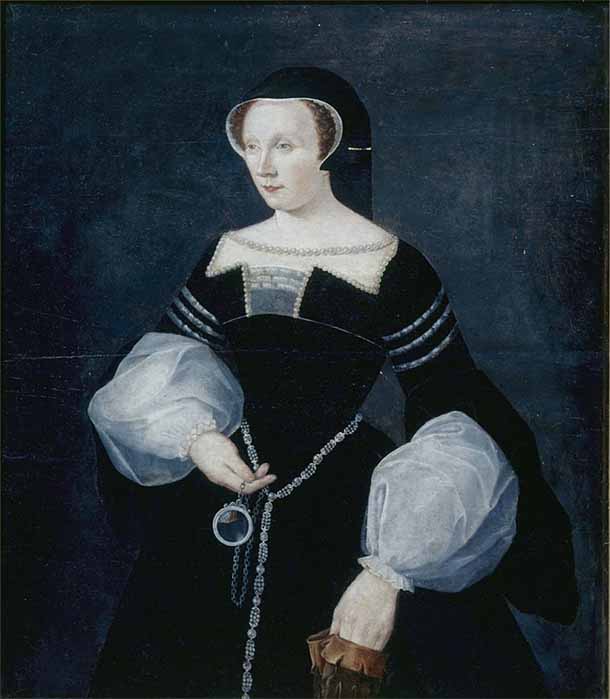
Unlawful Love - Queen Anne Boleyn – Witch or Not?
Queen Anne Boleyn, King Henry VIII’s second wife, was executed on 19 May 1536 on charges of adultery with five men, including her own brother, and plotting the King’s death. She was believed to have practiced “unlawful love” or witchcraft upon the King.
“Unlawful Love”
In 1538 the so called Exeter Conspiracy was detected and members of the Pole-Courtenay circle were arrested, examined and executed. Over the course of his interrogation, Geoffrey Pole, brother of Cardinal Reginald Pole, said that before divorcing his wife, the King was “caught in the snare of unlawful love with the lady Anne.” In other words, Pole insinuated that he and his circle believed that the King decided to divorce Katherine of Aragon because he was bewitched by Anne. The comment about the “unlawful love” carried witchcraft connotations. Provoking someone to “unlawful love” was among the tricks imputed to women using witchcraft to entice their lovers into a romantic relationship. It was not punishable by death during Anne’s lifetime in Tudor England, but it would become a felony under the 1542 Witchcraft Act.

Initially King Henry VIII was ‘bewitched’ with Anne Boleyn by William Powell Frith (1903) (Public Domain)
Chronicler Edward Hall wrote that in 1529, at the height of the royal divorce case, “the Queen’s ladies, gentlewomen, and servants largely spoke and said that Anne so enticed the King, and brought him in such amours, that only for her sake and occasion, he would be divorced from his Queen.” An air of scandal surrounded Anne’s relationship with the King, and in 1532 one foreign dignitary suggested that King Henry VIII was “charmed by potions or otherwise,” so the conservative faction at court was not alone in spreading gossip linking Anne with witchcraft.
“Accursed Lady”
The Holy Roman Emperor’s ambassador at King Henry VIII’s Tudor court, Eustace Chapuys, certainly believed that King Henry’s obsession with Anne bordered on unnatural, writing in December 1533 that “this accursed lady has so enchanted and bewitched him that he will not dare say or do anything against her will and commands.” Chapuys never referred to Anne as Queen, even though she was crowned with St Edward’s crown on 1 June 1533; to him she was always the detested concubine and her daughter, Elizabeth, was a bastard, an illegitimate child conceived in adultery. In Chapuys’s view, Anne was not only “accursed” but also “that Devil of a concubine.” Chapuys portrayed Anne as the driving force behind the King’s divorce from Queen Katherine of Aragon while depicting King Henry VIII as unable to resist her charms and persuasions. Blaming a woman for a man’s infatuation is simplistic and misogynistic, of course.

Portrait of Diane de Poitiers by François Clouet (1550) (Public Domain)
Anne Boleyn was certainly not the only 16th-century woman linked with witchcraft. Christian II of Denmark was swayed by the opinions of his long-term mistress Dyveke Sigbritsdatter, and after her death in 1517, he was then influenced by her mother Sigbrit Willoms. In January 1523, English ambassador Sir Robert Wingfield wrote that the Danish king was “more ruled by his witch than ever he was.” Dauphin Henri was also influenced by his much-older mistress, Diane de Poitiers. “I think Madame la Grande Seneschalle [Diane] hath witched him, for he loveth the emperor exceedingly,” said one English ambassador in 1542. Barbara Radziwiłłówna, mistress and then wife of Sigismund Augustus of Poland, was accused of using love magic to seduce the monarch because he fell deeply in love with her and married her although the match was opposed by his royal parents and magnates. When Barbara died at the age of 30 in 1551, the grief-stricken Sigismund accused his mother, Bona Sforza, of poisoning her.
“Seduced by Witchcraft”
In late January 1536, Henry VIII told one of his closest confidantes that he was tired of Queen Anne and considered a remarriage. The couple had only one child, Princess Elizabeth born on 7 September 1533, and in 1534 Anne suffered a stillbirth. In early 1536, either in January or February, Queen Anne suffered another tragic loss when she miscarried a son in her 15th week of pregnancy. Disillusioned with Queen Anne’s inability to provide him with a male heir, the King said that he “had made this marriage, seduced by witchcraft, and for this reason he considered it null; and that this was evident because God did not permit them to have any male issue, and that he believed that he might take another wife, which he gave to understand that he had some wish to do.” Jane Seymour, Queen Anne Boleyn’s maid of honour, was already waiting in the wings.





